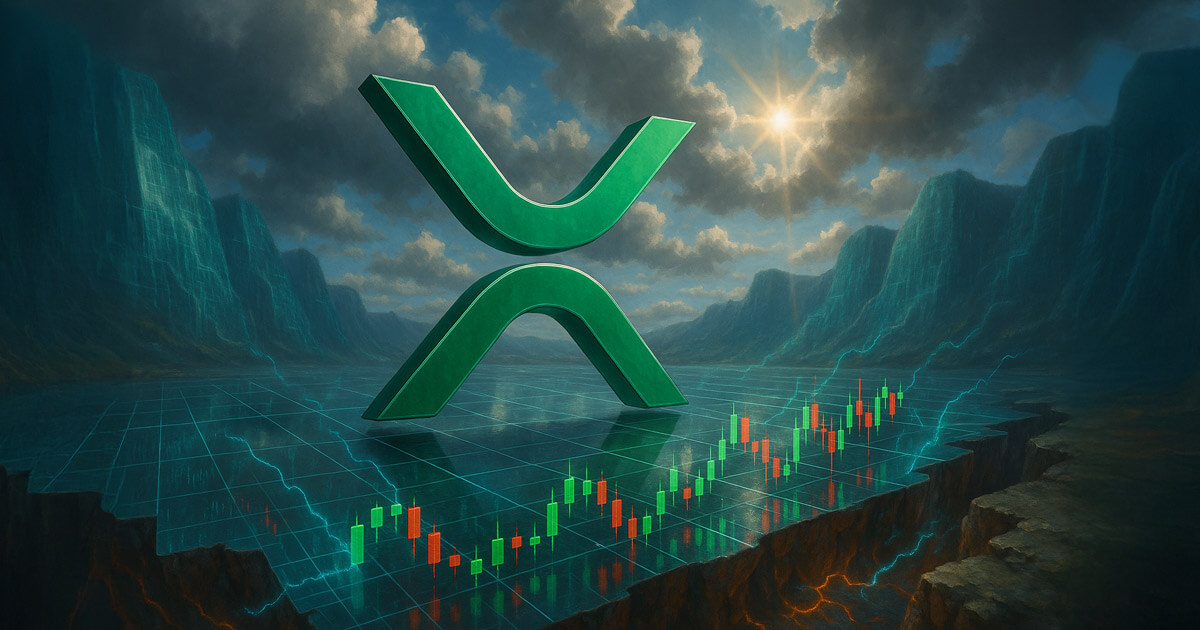Tight price parity hides structural gaps in XRP liquidity on exchanges

XRP traded remarkably consistently across Binance and Coinbase throughout July, despite stark differences in where and how liquidity was concentrated.
While prices between USD and USDT pairs remained within a few basis points of one another, the two exchanges diverged significantly in their respective trading volumes.
Binance captured nearly all activity for USDT-quoted XRP, while Coinbase emerged as the primary venue for USD-quoted pairs. This liquidity segmentation had tangible effects on where basis spreads emerged and how wide they became during periods of thinner market depth.
In the past 30 days, the closing prices across all four pairs have shown near-perfect alignment, especially between the USDT pairs on Binance and Coinbase, which maintained a 0.999 return correlation.
Price discrepancies averaged less than a third of a cent across any two pairs and, at their widest, spread to only $0.0164, about 55 basis points at the most extreme. This shows how efficiently arbitrage forces are maintaining XRP’s parity across both pairs and venues.
Despite this parity, small but persistent pricing patterns did emerge. On both exchanges, the USD pair tended to trade slightly higher than its USDT counterpart. On Binance, XRPUSD traded an average of $0.00109 above XRPUSDT, or about 3.6 basis points.
On Coinbase, the difference was slightly smaller at $0.00079, roughly 2.5 basis points. These differentials reflect conversion friction between fiat and stablecoins and subtle differences in execution mechanics between USD and USDT order books.
However, the most pronounced structural divergence was not in price but in trading volume. Binance overwhelmingly dominated XRPUSDT activity, with its 24-hour rolling volume averaging over 790 million XRP.
Coinbase’s equivalent USDT pair averaged just 5.5 million, amounting to a 99.3%–0.7% market share split in Binance’s favor. This concentration explains why price gaps occasionally spiked on the Coinbase USDT book, where thin liquidity amplified the effect of individual trades.
On several occasions (most notably July 19 and August 2), the USDT cross-exchange basis exceeded 40 basis points, temporarily pushing Binance prices more than a cent higher.

The reverse pattern played out in the USD pairs. Here, Coinbase commanded over 92% of the observed volume, with its 24-hour rolling average at 398 million XRP versus Binance’s 30 million.

This imbalance resulted in a tighter and more stable USD-based price spread between venues. The Binance-Coinbase USD basis averaged $0.00027 (just under one basis point), with narrow tails and few excursions beyond ±$0.005.

The inter-venue basis reflected this duality because each exchange leads in one quote currency and trails in the other. The USDT pair on Coinbase had the most volatile price relative to its peers, with short-lived dislocations reaching 30 to 47 basis points. These episodes were rare and brief, but they are a perfect example of how fragmented liquidity can expose otherwise efficient markets to localized volatility.
The average four-way price dispersion across all four pairs per bar was only $0.00283, less than 10 basis points at a $3 price level. Even during the most active intervals, dispersion stayed modest, peaking at $0.0164. This suggests that while liquidity may not be evenly distributed, price discovery is still effectively shared across venues and quotes.
Correlations in 30-minute log returns reinforce the idea of unified price behavior. All pairs moved together in lockstep, with cross-venue, same-quote correlations near 0.999, and cross-quote, same-venue correlations exceeding 0.997.
This level of alignment indicates that whatever trading flows dominate each venue do not diverge in their directional expectations. This is likely due to the influence of cross-exchange bots, arbitrage traders, and liquidity providers operating on both sides.
Still, some effects of market structure persist. On Coinbase, where USDT books are thin, XRP pricing showed more variance and less consistency in microstructure behavior. On Binance, the USDT books are deep and dominant, and the XRPUSD pair (being less active), showed lower total volume and smaller intraday extremes.
This split can matter for sophisticated traders: trades executed in size may face materially different slippage depending on which quote currency and exchange is used.
The data shows a well-functioning market with tight pricing despite fragmented liquidity. USDT trading remains Binance’s stronghold, while Coinbase leads in fiat exposure.
Basis levels stay modest, with USDT–USD price gaps typically below four basis points and inter-venue differences rarely breaching 10. Traders operating across both exchanges should be mindful not of the headline price but of the liquidity profile each quoted asset presents.
What emerges is a picture of two complementary markets: one rooted in stablecoin liquidity and the other anchored in fiat rails.
XRP sits at the intersection of both, and while its price looks the same regardless of where or how it’s traded, the underlying structure of those trades is shaped by the venue’s volume, quote asset, and book depth. It is efficient but far from symmetrical.
The post Tight price parity hides structural gaps in XRP liquidity on exchanges appeared first on CryptoSlate.
[title_words_as_hashtags



